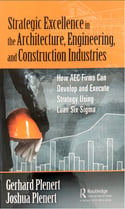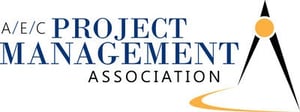 Strategic Excellence is not achieved by luck or through a management team wishing it into existence. It is developed through the intelligent and deliberate efforts of inspired leaders.
Strategic Excellence is not achieved by luck or through a management team wishing it into existence. It is developed through the intelligent and deliberate efforts of inspired leaders.
An effective strategy is one that is based in a deep understanding of current conditions and an inspired vision of the organization’s future potential. It develops metrics that drive results-oriented performance and promotes a culture of ideal behaviors. It cascades the strategy down to all levels resulting in an organization aligned with strategic objectives where each individual has a clear line-of-sight from his or her actions and how they connect to the overall mission of the organization.
An agile strategy is one that has been designed to respond to changing conditions through a culture of problem solving and strategic thinking. It employs a systems approach to solving the root-cause of problems and developing solutions that simplify operations and remove waste. It applies Lean and Six Sigma tools along with the Toyota Production System cultural thinking paradigm to empower each individual with the ability to solve problems at the source resulting in an engaging culture of continuous improvement.
An executable strategy is one that everyone throughout the organization understands and they know how they fit into its successful achievement. It is driven and sustained by everyone, from top management, to the engineers, and down to the employees on the construction site.
A sustainable strategy is one that is carefully partnered with a thriving and vibrant culture in order to create organization-wide ownership of strategic initiatives. It fosters an exciting culture of strategic thinking and continuous improvement by employing the Shingo Guiding Principles developed by the Shingo Institute and resulting in long-term advances rather than short-term improvement events.
 My book, Strategic Excellence in the Architecture, Engineering, and Construction Industries: How AEC Firms Can Develop and Execute Strategy Using Lean Six Sigma, details a strategic planning and management approach that will result in an effective, agile, executable, and sustainable strategy.
My book, Strategic Excellence in the Architecture, Engineering, and Construction Industries: How AEC Firms Can Develop and Execute Strategy Using Lean Six Sigma, details a strategic planning and management approach that will result in an effective, agile, executable, and sustainable strategy.
Strategic Excellence is created by design. It is founded in a thriving culture, guided by correct principles, empowered through ideal Shingo Principle based behaviors, and will result in long-term sustainable improvements. It turns wishful thinking into a realized vision. It converts a complaining culture into one that is based on effective problem solving. It solves common challenges resulting in an uncommon competitive advantage and will produce a level of performance that will render the competition irrelevant.
About the Author: Joshua Plenert, MBA, MS, PE is a licensed professional engineer and is currently serving as a Regional Manager for an engineering and architectural firm where he has played a major role in the development of two branch offices. Joshua’s educational background consists of a BS in Civil Engineering, an MS in Structural Engineering, and an MBA. He has worked in various aspects of the A/E/C industry for more than 14 years.
Business metrics and strategic planning are areas that most A/E project managers dread, possibly avoid, and may even ignore. Yet, the creation and use of effective metrics to influence business strategy is one of the most important ways PMs can help firms bring about crucial strategic success.
 Join Joshua Plenert in AECPMA's live podcast Metrics and Strategic Excellence—What A/E PMs Can Achieve When Schooled in Shingo and Lean Six Sigma, where he will talk with PMs and offer insight on how they can apply the leadership of Shingo and the scientific thinking of Lean Six Sigma to create, execute, and communicate critical business metrics.
Join Joshua Plenert in AECPMA's live podcast Metrics and Strategic Excellence—What A/E PMs Can Achieve When Schooled in Shingo and Lean Six Sigma, where he will talk with PMs and offer insight on how they can apply the leadership of Shingo and the scientific thinking of Lean Six Sigma to create, execute, and communicate critical business metrics.
AECPMA Podcasts Presents:
Joshua Plenert, P.E., Wednesday, August 22, 1:30 p.m. – 2:30 p.m. (EST)



